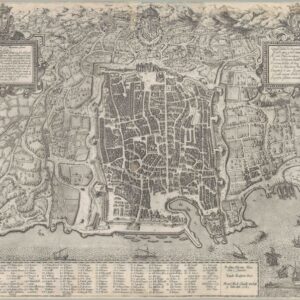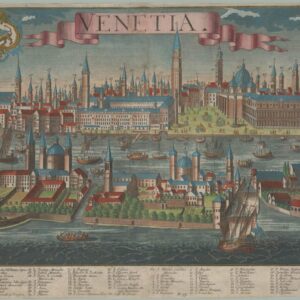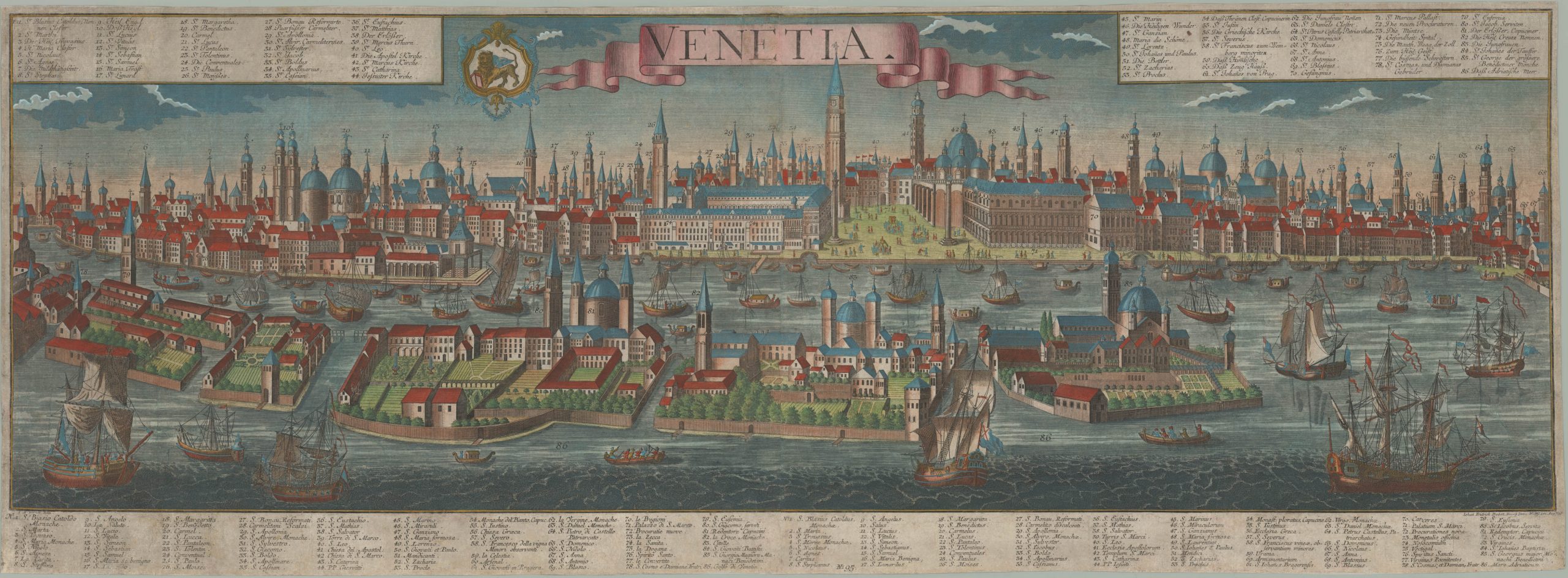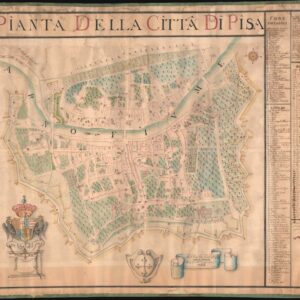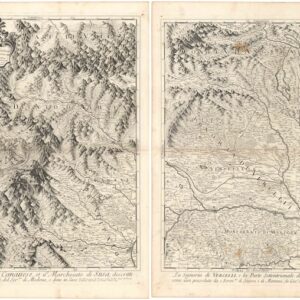A charming view of Verona’s ancient Roman theater.
Theatrum Veronese 1549.
Out of stock
Description
A lovely double-page representation of the Roman theater in Verona, Italy (Teatro romano di Verona), not to be confused with the better-preserved amphitheater Arena di Verona, engraved in 1567 by Sebastian Munster for his Cosmographia.
Munster presents the theater as it would have existed in its heyday as, by his own time, it had long fallen into disuse and was partially buried. Built in the late 1st century BCE, the theater is located on the northern bank of the Adige River and could accommodate thousands of spectators. Portions of the theater were built over in the Middle Ages, leaving uncertainty about its original appearance. Munster likely was influenced by a renewed interest in the structure in the 16th century, including sketches of its potential original appearance by Giovanni Caroto and Andrea Palladio. Beginning in the 19th century, archaeological work was undertaken in earnest, helping to understand better the ancient theater’s structure and that of the temple overlooking it.
This woodcut appeared in the 1567 German edition of Munster’s Cosmographia.
Cartographer(s):
Sebastian Münster (1488-1552) was a cosmographer and professor of Hebrew who taught at Tübingen, Heidelberg, and Basel. He settled in Basel in 1529 and died there, of the plague, in 1552. Münster was a networking specialist and stood at the center of a large network of scholars from whom he obtained geographic descriptions, maps, and directions.
As a young man, Münster joined the Franciscan order, in which he became a priest. He studied geography at Tübingen, graduating in 1518. Shortly thereafter, he moved to Basel for the first time, where he published a Hebrew grammar, one of the first books in Hebrew published in Germany. In 1521, Münster moved to Heidelberg, where he continued to publish Hebrew texts and the first German books in Aramaic. After converting to Protestantism in 1529, he took over the chair of Hebrew at Basel, where he published his main Hebrew work, a two-volume Old Testament with a Latin translation.
Münster published his first known map, a map of Germany, in 1525. Three years later, he released a treatise on sundials. But it would not be until 1540 that he published his first cartographic tour de force: the Geographia universalis vetus et nova, an updated edition of Ptolemy’s Geography. In addition to the Ptolemaic maps, Münster added 21 modern maps. Among Münster’s innovations was the inclusion of map for each continent, a concept that would influence Abraham Ortelius and other early atlas makers in the decades to come. The Geographia was reprinted in 1542, 1545, and 1552.
Münster’s masterpiece was nevertheless his Cosmographia universalis. First published in 1544, the book was reissued in at least 35 editions by 1628. It was the first German-language description of the world and contained 471 woodcuts and 26 maps over six volumes. The Cosmographia was widely used in the sixteenth and seventeenth centuries and many of its maps were adopted and modified over time, making Münster an influential cornerstone of geographical thought for generations.
Condition Description
Some wear and discoloration along centerfold, including small hole near top repaired with archival tissue on verso. Light soiling throughout. One chip along edge.
References
